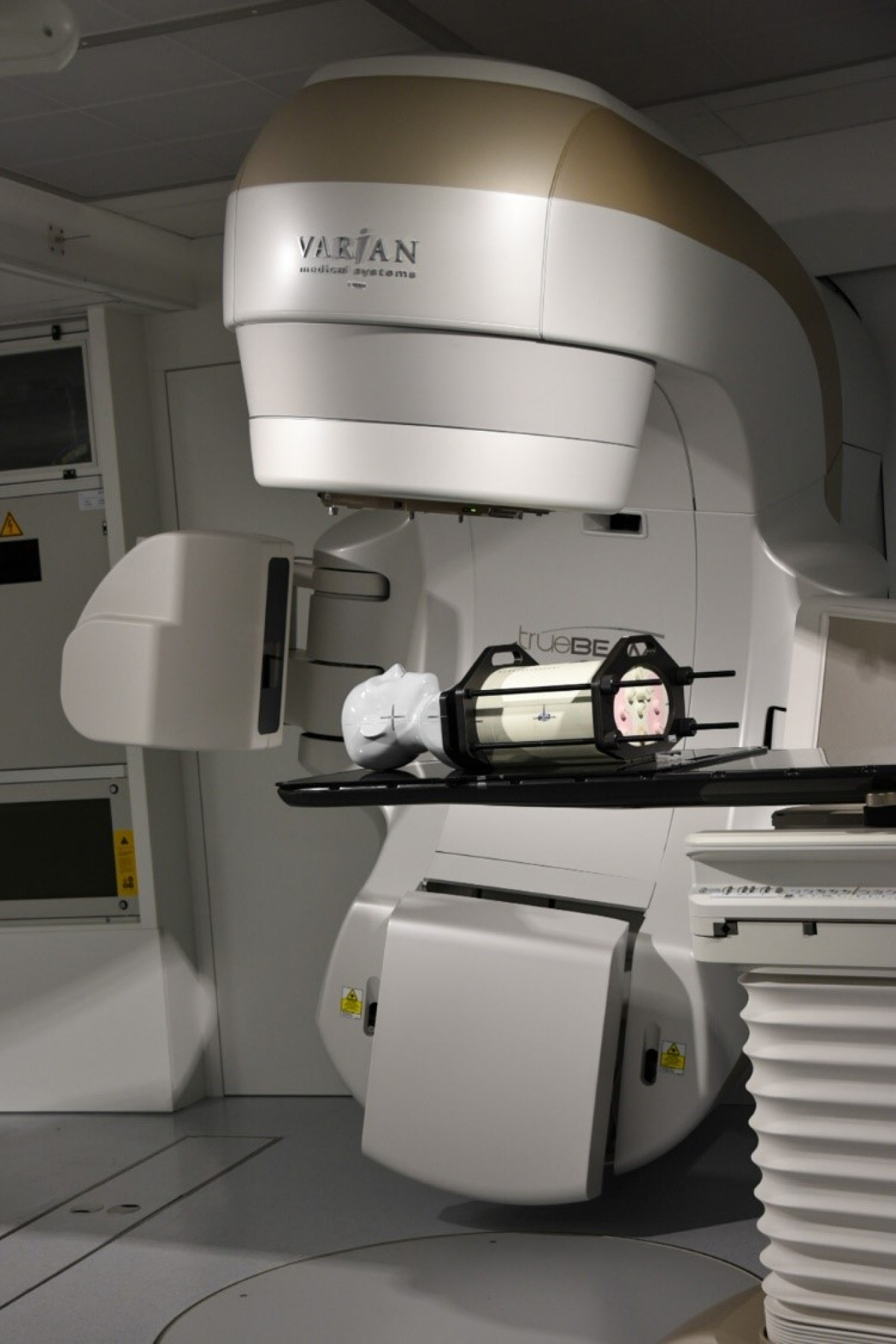NNSA’s Office of Radiological Security works to reduce the security risks posed by cobalt-60 radiotherapy machines by encouraging the development and adoption of non-radioisotopic alternative technologies, like linear accelerators.
National Nuclear Security Administration
February 4, 2022
In the global fight against cancer, radiotherapy is an essential tool. Radiotherapy involves the use of high doses of radiation to kill cancer cells and shrink tumors. Medical linear accelerators (LINACs), which use microwaves to generate radiation doses, have become the most common form of external beam radiotherapy treatment. However, some medical facilities and hospitals in the United States and internationally still use devices reliant upon cobalt-60, a radioactive isotope, to generate the doses of radiation – an approach that originated in the 1950s.
Unlike LINACs, security must be considered for the cobalt-60 machines in service worldwide. The cobalt-60 may pose risks if not carefully protected: terrorists could create a dirty bomb from the radioactive elements.
NNSA’s Office of Radiological Security (ORS) seeks to reduce the security risks of cobalt-60 by encouraging the development and adoption of non-radioisotopic alternative technologies. The office works toward this goal through outreach and education, research, and device replacement projects focused on access to accelerator-based radiotherapy. In doing so, ORS operates at a crucial nexus of health and security.
The lower-risk LINAC technology faces operational challenges in many parts of the world, so ORS supports projects that advance medical LINAC affordability, capability, and resiliency.
One ORS-funded effort from TibaRay, Inc. is developing a novel linear accelerator that will be more affordable, effective, and robust in these challenging environments. The proposed accelerators would expand deployment in low- and middle-income countries, which account for up to 70% of worldwide cancers. The technology could also enable FLASH-RT radiotherapy, which involves treating tumors with ultra-high doses of radiation, while reducing the trauma to normal tissue around the targeted area.
Another effort is through NNSA’s partnership with the International Atomic Energy Agency (IAEA). The IAEA assists Member States to address their cancer burdens through the use of nuclear technology, and this assistance often includes the procurement of radiotherapy technologies. In 2021, ORS announced a donation of $4.5 million to the Programme for Action on Cancer Therapy (PACT) to assist in the procurement of accelerator-based radiotherapy technology in several countries.
“We are grateful to the government of the United States for this generous and most welcome contribution. Many countries count on the IAEA’s expertise and ability to deliver concrete assistance that directly impacts the lives of #cancer patients. These funds will go where they are needed the most,” IAEA Director General Rafael Mariano Grossi said on Twitter.
PACT, along with the regional Technical Cooperation divisions, are major drivers of these efforts.
ORS also supports projects that bolster the sustainability of medical LINACs internationally. Sustainability is key for continued, effective patient treatment and continued risk reduction. In 2019, the IAEA inaugurated a medical LINAC at its Seibersdorf Laboratories in Austria to assist in training radiation oncology personnel from Member States and improve available quality of care for Member State patients. ORS provided a contribution to support the operation, maintenance, and warranty of this new medical LINAC. This partnership significantly enhanced IAEA capabilities and the type of assistance that can be provided to cancer care facilities worldwide.
ORS also relies on many domestic partners to carry out its mission. These include DOE/NNSA National Laboratories to identify experts to remove and manage the cobalt-60 that is being replaced. It also includes multiple U.S. facilities that have converted from cobalt-60 to LINAC technology. ORS provided partial funding support of the new devices and safely removed the old ones.
Through ORS, NNSA is aiding the fight against cancer and the specter of terrorism at the same time.

